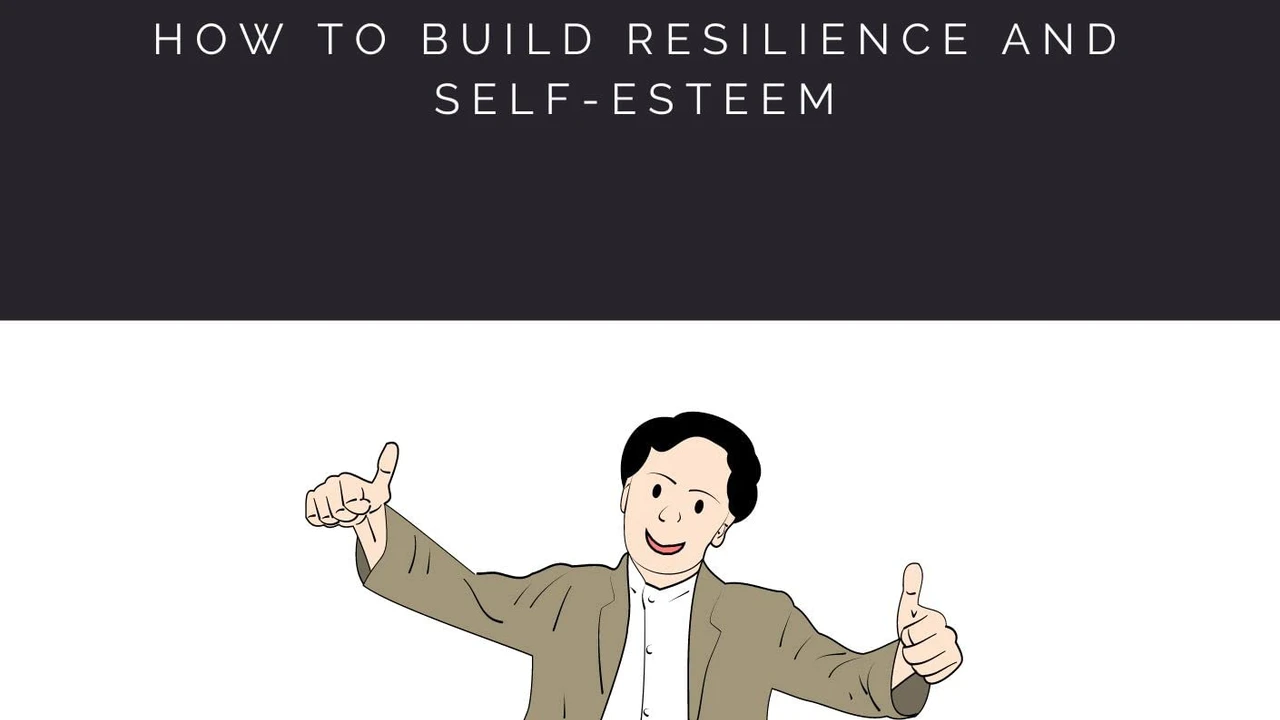Debunking 3 Common Diet Myths: What You Need to Know
Learn how to prevent common injuries at home, at work, and during exercise. Get practical tips for staying safe and protecting yourself from unnecessary pain and suffering.

Preventing Home Injuries Top Safety Tips
Home should be a sanctuary, but it's also a place where many accidents happen. Slips, trips, falls, cuts, burns – the possibilities are endless. But don’t worry! With a little awareness and some simple precautions, you can significantly reduce your risk of injury at home.
Addressing Fall Hazards
Falls are a major cause of home injuries, especially for older adults. Here’s how to minimize the risk:
- Clear Clutter: Get rid of anything that could cause someone to trip, like loose rugs, toys, or electrical cords.
- Secure Rugs: Use non-slip rug pads or double-sided tape to keep rugs from sliding.
- Install Grab Bars: In the bathroom, install grab bars in the shower and near the toilet.
- Improve Lighting: Make sure all areas of your home are well-lit, especially stairways and hallways. Consider adding nightlights.
- Use Handrails: Always use handrails when going up or down stairs.
Kitchen Safety Measures
The kitchen is another hot spot for injuries. Follow these guidelines to stay safe while cooking:
- Knife Safety: Use sharp knives (dull knives are more likely to slip), cut on a stable cutting board, and store knives in a knife block or drawer with blade guards.
- Burn Prevention: Use oven mitts or pot holders when handling hot cookware. Keep flammable materials away from the stove.
- Clean Up Spills Immediately: Spills can create slippery surfaces.
- Store Chemicals Safely: Keep cleaning supplies and other chemicals out of reach of children and pets. Store them in their original containers.
Bathroom Safety Precautions
The bathroom presents unique challenges due to wet surfaces and potential for slips. Consider these precautions:
- Non-Slip Mats: Place non-slip mats in the shower and on the bathroom floor.
- Adjust Water Temperature: Set your water heater to a safe temperature (around 120°F) to prevent scalding.
- Electrical Safety: Keep electrical appliances away from water. Never use a hair dryer or other electrical device while you're in the bathtub or shower.
Product Recommendations for Home Safety
Here are a few products that can help improve home safety:
- Non-Slip Rug Pads: Superior Lock Non-Slip Rug Pad. These pads are designed to keep rugs securely in place, preventing slips and falls. They work on hardwood, tile, and laminate floors. A 5x8 rug pad typically costs around $30. Compare this to cheaper options that may not provide as much grip or can damage flooring over time.
- Grab Bars: Moen Stainless Steel Grab Bar. A sturdy grab bar is essential for bathroom safety, especially for those with mobility issues. Moen is a trusted brand known for its durable and aesthetically pleasing designs. A 12-inch grab bar can cost around $40-50. Consider the weight capacity and mounting hardware when choosing a grab bar.
- Knife Block: Wüsthof Gourmet Knife Block Set. A knife block is a safe and organized way to store your knives. Wüsthof is a high-quality brand known for its precision-crafted knives. A 17-piece set can cost upwards of $500, but the knives will last for years with proper care. Cheaper sets are available, but the quality of the steel and the sharpness of the blades may not be as good.
- First Aid Kit: First Aid Only All-Purpose First Aid Kit. A well-stocked first aid kit is a must-have for any home. This kit includes bandages, antiseptic wipes, pain relievers, and other essential supplies. A basic kit costs around $20-30. Make sure to check the expiration dates of the supplies regularly and replenish as needed.
Preventing Workplace Injuries Maintaining a Safe Work Environment
The workplace can be a dangerous environment if proper safety measures aren't in place. From office settings to construction sites, it's crucial to be aware of potential hazards and take steps to prevent injuries.
Ergonomics in the Office Setting
Poor ergonomics can lead to musculoskeletal disorders (MSDs) like carpal tunnel syndrome, back pain, and neck pain. Here’s how to improve your workstation:
- Proper Posture: Sit with your back straight, shoulders relaxed, and feet flat on the floor.
- Adjust Your Chair: Adjust your chair so that your knees are at a 90-degree angle and your thighs are parallel to the floor.
- Position Your Monitor: Place your monitor at arm's length and slightly below eye level.
- Use a Keyboard Tray: A keyboard tray can help you maintain a neutral wrist position.
- Take Breaks: Get up and move around every 20-30 minutes to stretch your muscles and prevent fatigue.
Construction Site Safety Protocols
Construction sites are inherently dangerous, with risks of falls, equipment accidents, and exposure to hazardous materials. Here are some essential safety protocols:
- Wear Personal Protective Equipment (PPE): Always wear appropriate PPE, including a hard hat, safety glasses, gloves, and steel-toed boots.
- Fall Protection: Use fall protection equipment, such as harnesses and lifelines, when working at heights.
- Equipment Safety: Inspect equipment before use and operate it according to the manufacturer's instructions.
- Hazard Communication: Be aware of the hazards associated with the materials you're working with and follow proper handling procedures.
- Site Safety Training: Participate in regular safety training to stay informed about potential hazards and safe work practices.
Addressing Repetitive Strain Injuries (RSIs)
Repetitive tasks can lead to RSIs. Here’s how to prevent them:
- Vary Your Tasks: Avoid performing the same task for extended periods. Rotate tasks with coworkers or take breaks to do something different.
- Use Proper Technique: Learn and use proper techniques for repetitive tasks.
- Take Frequent Breaks: Take short, frequent breaks to rest your muscles.
- Stretch Regularly: Stretch your muscles regularly to improve flexibility and prevent stiffness.
- Use Ergonomic Tools: Use ergonomic tools and equipment to reduce strain on your body.
Product Recommendations for Workplace Safety
Here are some products that can help improve workplace safety:
- Ergonomic Chair: Herman Miller Aeron Chair. An ergonomic chair is a worthwhile investment for anyone who spends a lot of time sitting at a desk. The Aeron chair is known for its adjustable features and comfortable support. It typically costs around $1500. Consider this chair compared to cheaper options as it provides superior lumbar support and promotes better posture.
- Standing Desk Converter: FlexiSpot Standing Desk Converter. A standing desk converter allows you to easily switch between sitting and standing, which can help reduce back pain and improve circulation. A good quality converter costs around $300-400. Compared to a full standing desk, this is a more affordable option that allows you to use your existing desk.
- Safety Glasses: Pyramex I-Force Safety Glasses. Protect your eyes from flying debris with a pair of durable safety glasses. These glasses are designed to provide impact resistance and a comfortable fit. They typically cost around $15-20. Ensure the glasses meet ANSI Z87.1 standards for impact protection.
- Steel-Toed Boots: Timberland PRO Boondock 6" Steel-Toe Work Boot. Steel-toed boots are essential for construction workers and others who work in hazardous environments. These boots provide protection from falling objects and punctures. A pair of good quality steel-toed boots costs around $150-200. Look for boots that are comfortable and durable.
Preventing Sports Injuries Safe Practices for Athletes
Whether you're a professional athlete or a weekend warrior, sports injuries are a common occurrence. But many sports injuries can be prevented with proper training, warm-up routines, and safety precautions.
Warm-Up and Cool-Down Routines
Warming up before exercise prepares your muscles for activity, while cooling down helps them recover afterward.
- Warm-Up: Start with light cardio, such as jogging or jumping jacks, to increase blood flow to your muscles. Then, perform dynamic stretches, such as arm circles and leg swings.
- Cool-Down: After exercise, cool down with light cardio and static stretches, holding each stretch for 30 seconds.
Proper Training Techniques
Using proper training techniques can help prevent overuse injuries and improve performance.
- Progressive Overload: Gradually increase the intensity and duration of your workouts to avoid overloading your muscles.
- Cross-Training: Incorporate different types of exercises into your routine to work different muscle groups and prevent overuse injuries.
- Listen to Your Body: Pay attention to any pain or discomfort you feel and stop exercising if necessary.
Using Protective Gear
Wearing appropriate protective gear can help prevent serious injuries.
- Helmets: Wear a helmet when biking, skateboarding, skiing, or snowboarding.
- Mouthguards: Wear a mouthguard when playing contact sports like football, basketball, or hockey.
- Pads: Wear pads on your knees, elbows, and wrists when skateboarding, rollerblading, or skiing.
Hydration and Nutrition
Staying hydrated and eating a balanced diet are essential for preventing injuries and optimizing performance.
- Hydration: Drink plenty of water before, during, and after exercise.
- Nutrition: Eat a balanced diet that includes plenty of fruits, vegetables, and whole grains. Make sure you're getting enough protein to support muscle growth and repair.
Product Recommendations for Sports Injury Prevention
Here are some products that can help prevent sports injuries:
- Foam Roller: TriggerPoint GRID Foam Roller. A foam roller can help you release muscle tension and improve flexibility, which can prevent injuries. The TriggerPoint GRID foam roller is a popular choice among athletes. It typically costs around $30-40. Use it before and after workouts to massage your muscles.
- Resistance Bands: TheraBand Resistance Bands. Resistance bands are a versatile tool for strengthening your muscles and improving flexibility. They can be used for a variety of exercises, including warm-up routines and cool-down stretches. A set of resistance bands costs around $15-20. Choose the appropriate resistance level for your fitness level.
- Ankle Brace: McDavid Ankle Brace. An ankle brace can provide support and stability to your ankle, which can help prevent sprains. McDavid is a trusted brand known for its high-quality sports braces. An ankle brace costs around $30-40. Consult with a doctor or physical therapist to determine if an ankle brace is right for you.
- Sports Mouthguard: Shock Doctor Gel Max Mouthguard. Protect your teeth and jaw from impact with a sports mouthguard. Shock Doctor offers a variety of mouthguards for different sports. A Gel Max mouthguard costs around $20-30. Make sure to properly fit the mouthguard to your mouth for optimal protection.
General Tips for Injury Prevention Overall Wellness for a Safer Life
Beyond specific environments and activities, certain general practices can significantly reduce your risk of injury across the board.
Maintaining a Healthy Weight
Being overweight or obese puts extra strain on your joints and muscles, increasing your risk of injury.
- Balanced Diet: Eat a balanced diet that's low in processed foods, sugary drinks, and unhealthy fats.
- Regular Exercise: Get regular exercise to burn calories and build muscle.
Strengthening Your Core Muscles
Strong core muscles provide stability and support for your spine, which can help prevent back pain and other injuries.
- Planks: Hold a plank position for 30-60 seconds.
- Crunches: Perform crunches to strengthen your abdominal muscles.
- Back Extensions: Perform back extensions to strengthen your back muscles.
Improving Flexibility and Balance
Good flexibility and balance can help you avoid falls and other injuries.
- Stretching: Stretch your muscles regularly to improve flexibility.
- Yoga: Practice yoga to improve flexibility, balance, and strength.
- Balance Exercises: Practice balance exercises, such as standing on one foot.
Getting Enough Sleep
Lack of sleep can impair your judgment and coordination, increasing your risk of injury.
- Establish a Regular Sleep Schedule: Go to bed and wake up at the same time each day.
- Create a Relaxing Bedtime Routine: Take a warm bath, read a book, or listen to relaxing music before bed.
- Create a Sleep-Conducive Environment: Make sure your bedroom is dark, quiet, and cool.
Product Recommendations for Overall Wellness and Injury Prevention
Here are some products that can help promote overall wellness and prevent injuries:
- Vitamin D Supplement: Nature Made Vitamin D3. Vitamin D is essential for bone health and muscle function. Many people are deficient in vitamin D, especially during the winter months. A vitamin D supplement can help you maintain healthy vitamin D levels. A bottle of Nature Made Vitamin D3 costs around $10-15. Consult with a doctor to determine the appropriate dosage for you.
- Balance Board: Indo Board Balance Trainer. A balance board can help you improve your balance and coordination, which can prevent falls. The Indo Board is a popular choice among athletes and fitness enthusiasts. It costs around $100-150. Start slowly and gradually increase the difficulty of the exercises.
- Supportive Shoes: ASICS Gel-Kayano Running Shoes. Wearing supportive shoes can help prevent foot and ankle injuries, especially when walking or running. ASICS Gel-Kayano running shoes are known for their cushioning and stability. They cost around $130-160. Get fitted for shoes at a specialty running store to ensure a proper fit.
- Weighted Blanket: YnM Weighted Blanket. A weighted blanket can help you relax and improve sleep quality, which can reduce stress and improve overall well-being. A YnM weighted blanket costs around $50-80. Choose a weight that's approximately 10% of your body weight.
:max_bytes(150000):strip_icc()/277019-baked-pork-chops-with-cream-of-mushroom-soup-DDMFS-beauty-4x3-BG-7505-5762b731cf30447d9cbbbbbf387beafa.jpg)






